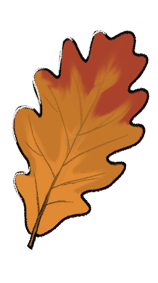Emoticons (also called smileys) are used in email, chat and other Net communication. They allow the writer to show humour, sarcasm, etc. This is useful in the typewritten medium of the Internet where communication can be misunderstood. Smileys are faces made from the basic keyboard (ASCII) characters. To 'read' them look at them sideways. :-)
Text based only, not web graphics. See Emojis.
More information
More information
Related categories 1
Sites 26
Text emojis. Tap to copy, paste anywhere.
Select an emoji to automatically post to your Twitter account.
The original emoticon site. Common and not so common emoticons.
Directory of images. Text font generators.
Directory of text-based emoticons and smileys to use in online forums and email.
A sequence of ordinary characters you can find on your computer keyboard. Emoticons are used in e-mail and other forms of communication.
A hub site for fans of emoticons. People and sites are listed by location.
Displaying popular emoji texts in colour.
Kaomoji, Japanese text emoticons. Japanese text emoticons sorted by actions, negative, positive, animal, and popular.
This plugin substitutes text emoticons with images. Works with Grav CMS.
Built on December, 1994 from another smiley page.
Collection of kaomoji text faces.
A collection of kaomoji, Japanese emoticons, kawaii emoticons.
Five states of a smiley of Sigmund Freud. Emoticons leading to a gif, a dedicated signature.
Online directory to look up words, acronyms, smileys, ASCII art, whatever you don't understand.
A collection of smiley faces used in Internet messages..
A list of emoticons used in email, online chat, and instant messaging.
Scott E. Fahlman writes about how he started smileys in text email.
Recommended emoticons and smileys for email communication.
Star Trek smileys and emoticons. A short introduction to smileys.
Graphic images posted with the text origin.
A guide to posting emoticons on WordPress sites.
Article by Sam Mohun. Published on the 20th anniversary of the smiley.
(September 19, 2002)
Linguist, Naomi Baron, predicts that abbreviations will replace emoticons and that electronic communication will grow increasingly cryptic as groups develop their own secret codes.
(March 31, 2001)
Article about Scott Fahlman and emoticon use. Fahlman is the originator of the "emotional icon," or "emoticon".
(March 31, 2001)
Neal Stephenson's anti-smiley screed from The New Republic.
(September 13, 1993)
Directory of images. Text font generators.
Text emojis. Tap to copy, paste anywhere.
Kaomoji, Japanese text emoticons. Japanese text emoticons sorted by actions, negative, positive, animal, and popular.
A guide to posting emoticons on WordPress sites.
Select an emoji to automatically post to your Twitter account.
Displaying popular emoji texts in colour.
Graphic images posted with the text origin.
This plugin substitutes text emoticons with images. Works with Grav CMS.
A hub site for fans of emoticons. People and sites are listed by location.
Collection of kaomoji text faces.
A collection of kaomoji, Japanese emoticons, kawaii emoticons.
Five states of a smiley of Sigmund Freud. Emoticons leading to a gif, a dedicated signature.
Directory of text-based emoticons and smileys to use in online forums and email.
A collection of smiley faces used in Internet messages..
The original emoticon site. Common and not so common emoticons.
A list of emoticons used in email, online chat, and instant messaging.
Star Trek smileys and emoticons. A short introduction to smileys.
Built on December, 1994 from another smiley page.
Scott E. Fahlman writes about how he started smileys in text email.
Online directory to look up words, acronyms, smileys, ASCII art, whatever you don't understand.
Recommended emoticons and smileys for email communication.
A sequence of ordinary characters you can find on your computer keyboard. Emoticons are used in e-mail and other forms of communication.
Article by Sam Mohun. Published on the 20th anniversary of the smiley.
(September 19, 2002)
Linguist, Naomi Baron, predicts that abbreviations will replace emoticons and that electronic communication will grow increasingly cryptic as groups develop their own secret codes.
(March 31, 2001)
Article about Scott Fahlman and emoticon use. Fahlman is the originator of the "emotional icon," or "emoticon".
(March 31, 2001)
Neal Stephenson's anti-smiley screed from The New Republic.
(September 13, 1993)

Last update:
November 27, 2023 at 3:07:21 UTC

Check out
News: Headline Links: Collaborative
- Recently edited by darrelljon2
- Recently edited by darrelljon2